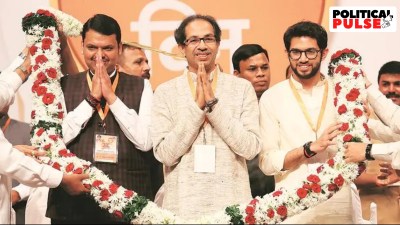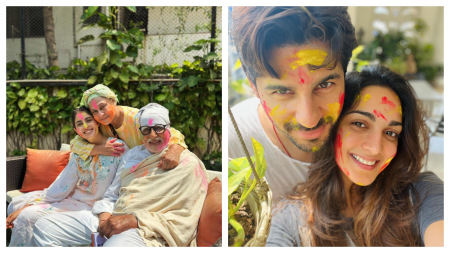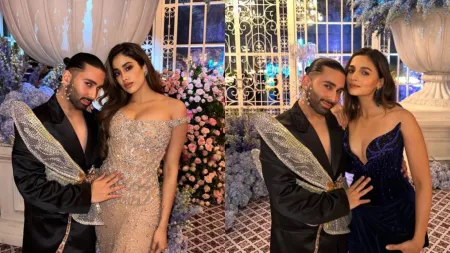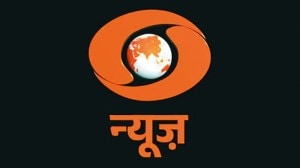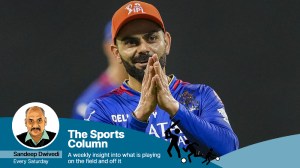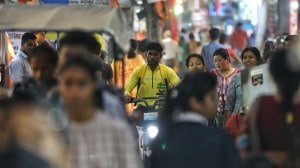- India
- International
Decoding Article 15 with screenwriter Gaurav Solanki
Article 15 co-writer Gaurav Solanki opens up on the film's journey, the scenes he wished were shot differently and what he wants upper caste to learn from the Anubhav Sinha film.
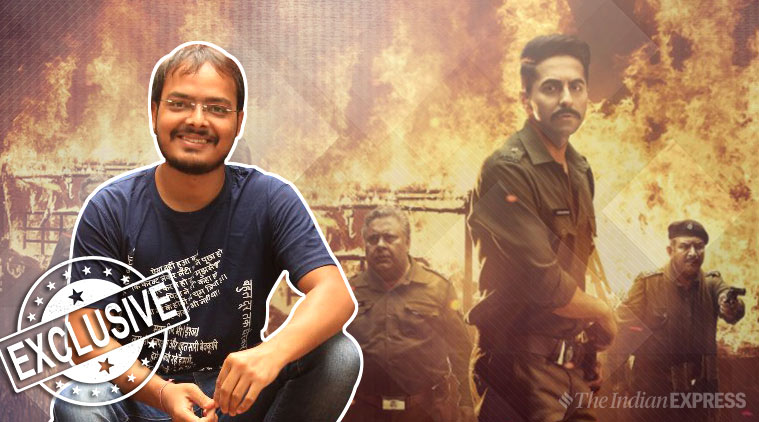 Article 15 co-writer Gaurav Solanki reveals that in Anubhav Sinha’s draft Ayan and Brahmadatt were already there. He brought in Gaura, Nishad and Jatav’s characters.
Article 15 co-writer Gaurav Solanki reveals that in Anubhav Sinha’s draft Ayan and Brahmadatt were already there. He brought in Gaura, Nishad and Jatav’s characters.
Amid the customary congratulatory calls and messages for his maiden work Article 15, it is the satisfaction of finally finding direction for his anger that dominates writer Gaurav Solanki. “I didn’t want to express anger on Facebook or Twitter.” He waited for almost eight years to bring it to celluloid.
In an interview with indianexpress.com, Gaurav opens up on the journey of Article 15, which he co-wrote with director Anubhav Sinha, the scenes he wished were shot differently and what he wants upper caste to learn from the film.
Here are excerpts from the conversation:
Q. When did the journey of Article 15 begin?
Indirectly, it started when I was growing up. I remember some incidents from my ancestral village in western UP. I think I was 11 or 12 when I saw my relative slapping a Dalit worker. It felt weird that two men in their 40s insulted someone and that worker was apologising to them. That moment stayed with me.
Later, I read in the newspaper an incident in Gohana (Haryana) where two-three Dalits were beaten to death by a mob in the name of cow vigilantism. Honor killings used to affect me a lot and that started coming in my stories. My work has had regular mentions of caste. There was one incident where kids refused to eat mid-day meal cooked by a Dalit worker. So, you realise that this has seeped into children too, and we are talking about the 21st century. These incidents happen across the country and it angered me every time.
I met Anubhav during Mulk’s post production. Sudhir Mishra had told me that Anubhav was looking for someone, who could write the screenplay and lyrics. But the project that we met for didn’t work out.

Anubhav had written a rough draft under the title Kanpur Dehat. I liked its soul and what he wanted to say about caste. But I told him, ‘If you want me on board, then I want to bring a lot of new things and I would like to change 80 per cent of it.’ He was open to that. That’s how we started writing this film last year around August. My first attempt was to make it a thriller because I felt it couldn’t afford to be a preachy social drama.
Q. Why so?
Because otherwise the audience it is catering to becomes limited. You will have that one room only where intellectuals, who read editorials, are sitting. The ones who retweet each other’s posts. But that conversation does not go outside that room. That drawing room becomes bigger with a film but still such a film remains niche only.
I was clear on this and Anubhav was with me that we needed to take the film to a larger audience and thankfully, thrillers come naturally to me. So, I thought we should have a third girl who goes missing, and the story also becomes about finding her, which gives a sense of hope. That suddenly made the story really interesting.
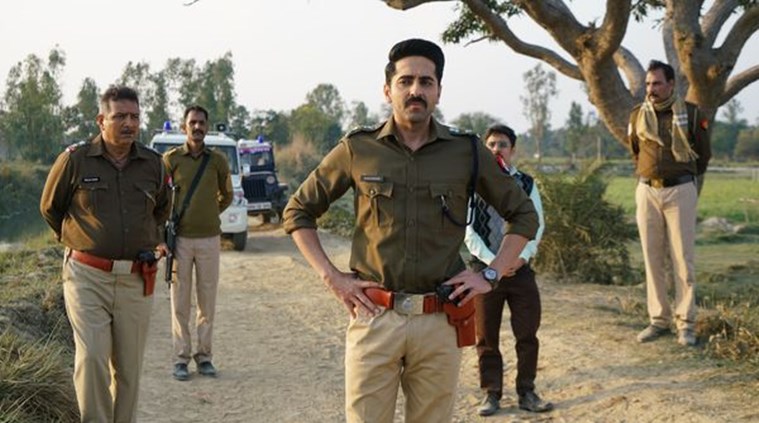 Article 15 tackles caste-based discrimination in the country and stars Ayushmann Khurrana in the lead role.
Article 15 tackles caste-based discrimination in the country and stars Ayushmann Khurrana in the lead role.
Q. What all went into its research? Did that include speaking to Dalit writers or activists?
We spoke to a lot of journalists who have worked on caste-based violence. I didn’t speak to any Dalit activist, though I had read a lot. Anubhav spoke to a few people, all of whom might not be Dalits, but they are the people who have been working on this issue for the past 20 years.
Then we began creating characters. In Anubhav’s draft, Ayan (Ayushmann) and Brahmadatt (Manoj Pahwa) were already there. I brought in Gaura (Sayani Gupta), Nishad (Zeeshan Ayyub) and Jatav (Kumud Mishra) and all of them are really dear to me. The film’s first 15-20 minutes are from his draft, whose dialogues we re-wrote, but rest of the story was totally changed.
Nishad was so important for me that there was a fear a lot of times that we might deviate from the story because of him. We were getting such a feedback from the team. Like the scene in school with Nishad, we were told not to put that because that looked out of the story. But we were making the film for him only! He was so important to tell this story. Whatever he says in the film, that’s what we were making the film for. So, despite the feedback, we didn’t remove those portions, rather included his story in the script.
Q. With Jatav’s character, you walked a thin line. While internalisation of caste bias exists in Dalits because of the discrimination and atrocities they have been subjected to over the years, showing a Dalit man shying away from his identity and referring to people from his community as others can validate the prejudice of ‘us and them’ that upper caste has always held on to.
Jatav’s character is really interesting. He is one of those people in the system who would do neither good nor bad. So, his presence makes no difference. And because he is a Dalit, he also tries to stay low-key. He doesn’t want to invite attention to himself. He has a lot of pent up anger because of this but he has also given justification for it to himself. That scene where he says, ‘I am an insider. I know the problem of SC/ST,’ is very important because he talks how upper caste talks about it. He tries to justify it by saying, ‘People expect a Singham of me. But I cannot because only I know how I have made a place for myself.’
I had his back story in my mind that perhaps after studying and finding himself a job, he must have tried to help others in his community, who of course looked up to him, but slowly the system made it difficult for him to live with his identity. It ostracises you because you belong to this caste and hence, in trying to fit in, you start running away from your identity.
I had confidence in our dialogue writing and Kumud that we would be able to portray his transformation. A strong influence for this was Jhoothan by Om Prakash Valmiki, which I read a few years ago. Anubhav and Ayushmann also read it during the film.
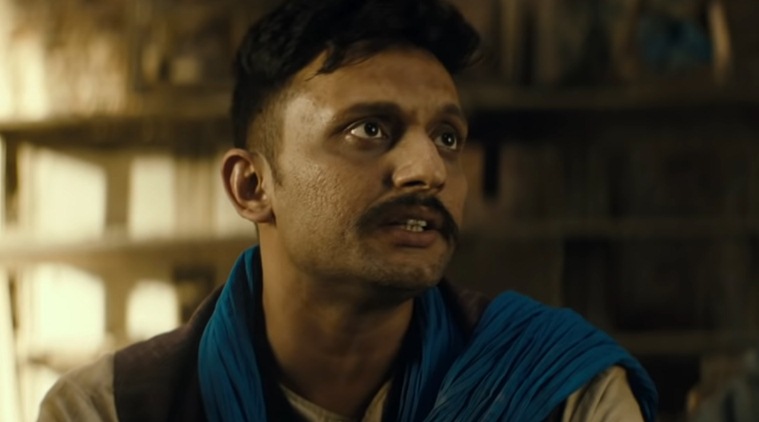 Mohammed Zeeshan Ayub plays a Dalit leader named Nishad in Article 15.
Mohammed Zeeshan Ayub plays a Dalit leader named Nishad in Article 15.
Q. Did you ever feel that the story should be told through Nishad’s perspective?
No, this was never there. But Nishad was very important. In some ways, he was more important than Ayan. His scenes are mostly written by me. The conversation that’s happening around Nishad right now, we wanted that to happen. I wanted people to miss him. So, we felt that if we have less of him, the loss would be felt more.
You will feel incomplete because even in real, the same happens with these people. We read about them in newspapers or magazines but also move on quickly. They never get 10 million followers or are talked about on prime time news. Through Nishad we could say a lot, thankfully.
Zeeshan and I talked a lot about the character. We discussed contemporary Dalit politics and what the Dalit youth thinks. Both of us really like Pash. If I get a chance, I would love to write a separate story of Nishad because he has a very interesting story. We used references from Rohith Vemula. Some people asked us why we needed to do that but we knew we wanted conversations around it and that because of the film, people talk about Rohith too. So, we used a few lines from his letter.
Q. So, why was Ayan made the protagonist?
Ayan is an upper caste, north Indian privileged man, who has a nice heart, but is ignorant about the umpteen privileges he enjoys. Like how he tells his girlfriend, ‘countryside India is so beautiful,’ and the way he is dressed and how he stands. The audience, whom we wanted to speak to, was precisely that. We knew there is already an aware and converted part of the audience but the one, who is apathetic, which includes a huge male audience, we wanted to speak to it through our protagonist because most of the times, people feel what the protagonist feels.
I saw a documentary some time ago, where a guy is extremely angry about reservation and he says, “There’s no casteism left in the country. Everyone’s equal and there’s no discrimination.” So, the journalist asks him if he has any Dalit friend or he knows someone from SC/ST and he says no. That says a lot. So, we wanted to connect to that guy, that maybe he is not a bad person but his ignorance is problematic. So, if via Ayan, they understand the world, they might get sensitised.
Just before we began writing the screenplay, we seriously considered if the protagonist could be a girl. I was excited about it but as we started developing the story, it became extremely important to establish Ayan’s privilege early on. With a girl, even if she is from upper caste, that wouldn’t have been possible because she would still be more gender sensitive and aware than a man. For both, Anubhav and me, it was important to show Ayan’s privilege because whether he says it or not, whatever is happening in the system, people like Ayan are guilty of it.
Q. Isha Talwar’s Aditi and her equation with Ayan is definitely one of the most progressive one has seen on screen in Bollywood lately. What was her back story? Was she part of the original draft?
The character existed since the beginning but it was developed over time. In all my work, I am conscious about my female characters. I am a male writing female characters and I have this concern that I don’t end up doing what other Bollywood films have done with our female roles. I discuss these parts with my female friends. I have an old female friend, whom I often show my female characters to make sure I am not doing something wrong. I pay extra attention to what women in the crew and the actresses playing these parts have to say because a lot of times we make mistake even if unintentionally.
There’s a dialogue where Ayan tells Aditi that she doesn’t look at him the way Gaura looks at Nishad. And I was concerned that it would look like a complaint, putting the onus of his feelings on her as if she is guilty of doing that. So, I told Ayushmann that he should say it in a way that it doesn’t look like that, and he should add a line to it, “Maybe I lacked something.”
Q. The juxtaposition of this scene with that of Nishad and Gaura where he regrets they could never afford even a few moments together is another example of the privilege that upper caste enjoys.
What Ayan is feeling is such a first world problem. He is comparing his love story to that of two people, who aren’t even certain if they will get to see each other again!
Q. Brahmadatt, who is a rapist and a murderer, is shown to be a dog lover. The difference between how he treats people around him and the love he showers on pets is glaring. Was this aspect picked from what the country has been witnessing over the last few years.
(Laughs). Kind of. That’s a way of showing to the audience what they are up to in real life. And it’s funny how everyone finds it weird in a film but in real life they find it normal. So, we had a chance there. Another reason for it was this added another shade to his character. Otherwise, he could have been any other Bollywood villain. Kumud Mishra suggested us that we should add a positive shade to the character.
Q. With caste in focus, the film has tried to cover a range of issues, from English elitism to politics in UP. Did it ever feel risky touching too many things in one go?
I wanted to say much more but we couldn’t. There was not much scope of showing caste bias in urban setting so we tried with a few things here and there. Regarding the scene about English elitism, upper caste uses this as a tool to discriminate against Dalits. English is today’s Sanskrit.
Q. While for most part of the film the focus is on Ayan’s entitlement, the last key moments in the story makes a hero out of him, which has invited criticism. The one scene, where he carries the third missing girl in his arms, or the one where Gaura folds her hands to thank him.
The scene you mentioned of Ayan carrying the third girl did not set right with me. Anubhav and I had a lot of discussion over this. I told him that Gaura should carry her because she is her sister and Ayan should be in the background because even with this one change, we would convey a lot. Ayan did nothing out of this world. He just did his job. But this was Anubhav’s directorial call to keep that scene that way.
Subconsciously, there might have been two reasons for him to do this. First, maybe it was a way to connect with masses because you have a big star in the film so that scene would work for the larger audience. Also, before Mulk, he has made films with stars so there is some reflection of that in this scene. We never reached a conclusion on this debate. He didn’t find much problem in that scene. Even a scene before that when Ayan finds the girl and Gaura is behind him, I wanted Gaura to instead pick her in her arms. These were among the small disagreements that we had but the final call is always taken by the director.
There was another scene with hand-folding and I told Anubhav during editing to remove it and he also agreed to it. Also, the Gaura in my mind was far more fierce and angry than what Anubhav thought. In his mind, she was a little scared. So, what Sayani has played is definitely Anubhav’s Gaura. Mine would have never folded her hands in front of anyone.
Q. So, how do you react to the criticism that the film suffers from Brahmin-saviour complex?
I respectfully disagree with it. I hear people’s concern and won’t dismiss it or say that they don’t understand. I understand the space they are saying that from. But I want to say that was never our intention. If those scenes make you feel that way, please forgive us. Our intention was to start a conversation and make the story reach maximum number of people. I would also request people to look at what we have done with Nishad’s character. I don’t remember a mainstream Hindi film, where a Dalit character’s voice has been so strong. And I am proud of it.
Also read: ‘Article 15’ highlights once again the need for more diversity within Bollywood
Q. Do you feel the upper caste will come out of the film feeling guilty?
I hope so. I hope at least some do because that should be the aim. There’s a scene where Ashish Verma’s character tells Gaura, ‘Hum maafi maangenge, baar baar maangenge. Maaf mat karna.’ That apology is from all of us. If upper caste feels this, it would be great.
Click for more updates and latest Bollywood news along with Entertainment updates. Also get latest news and top headlines from India and around the world at The Indian Express.
Photos
Apr 20: Latest News
- 01
- 02
- 03
- 04
- 05











